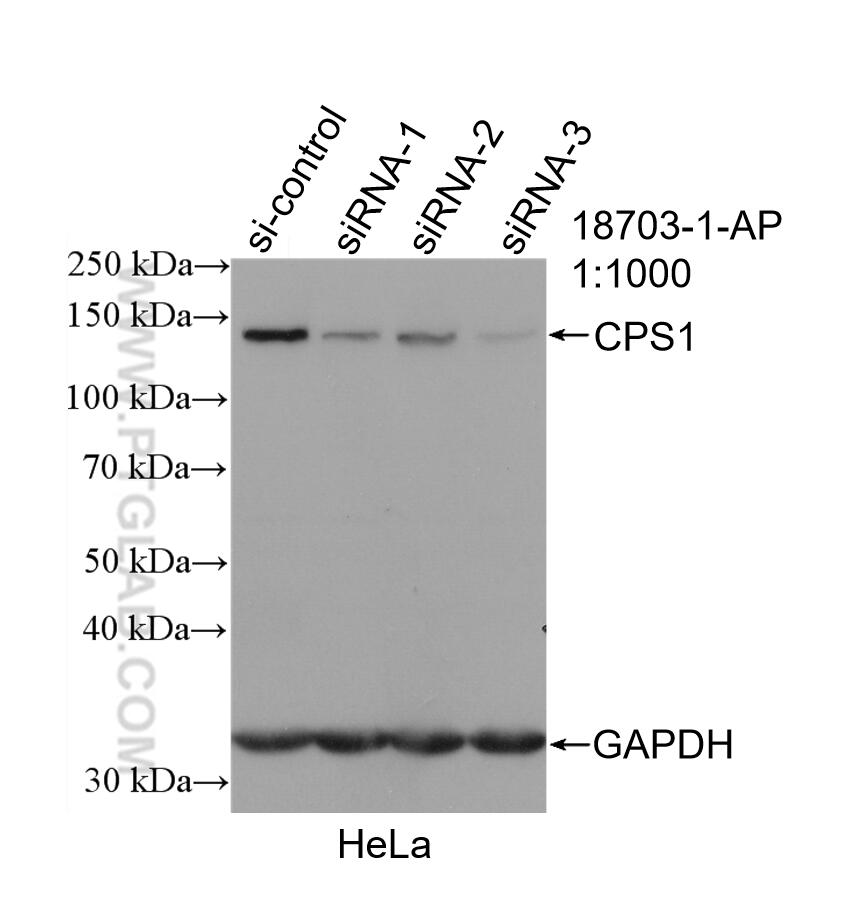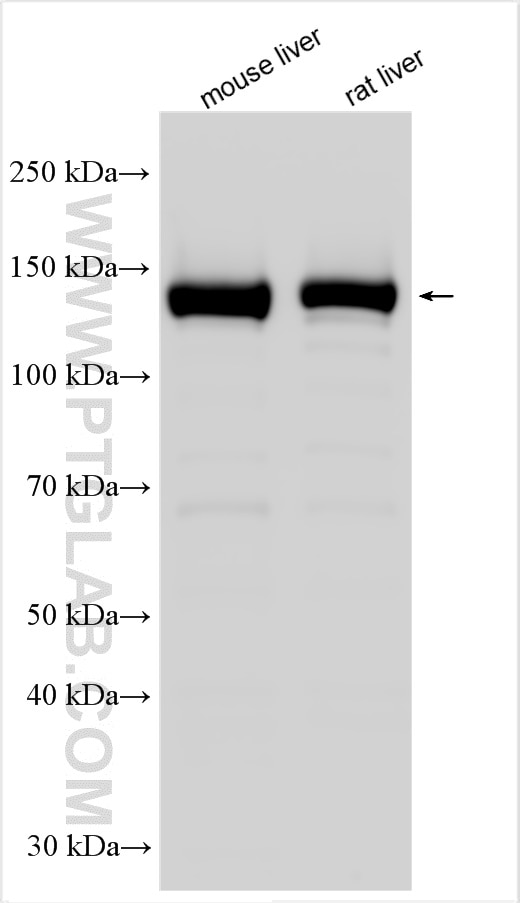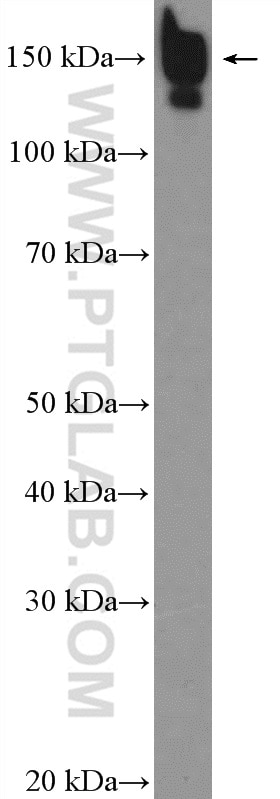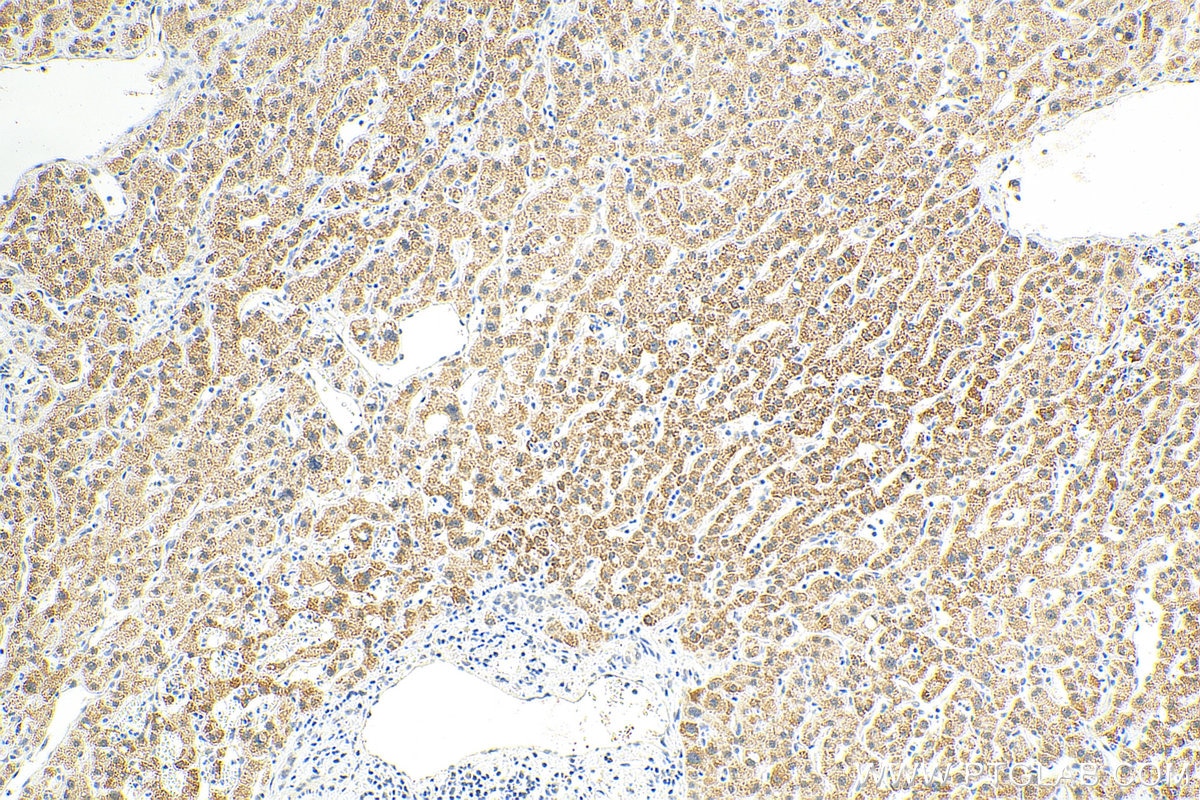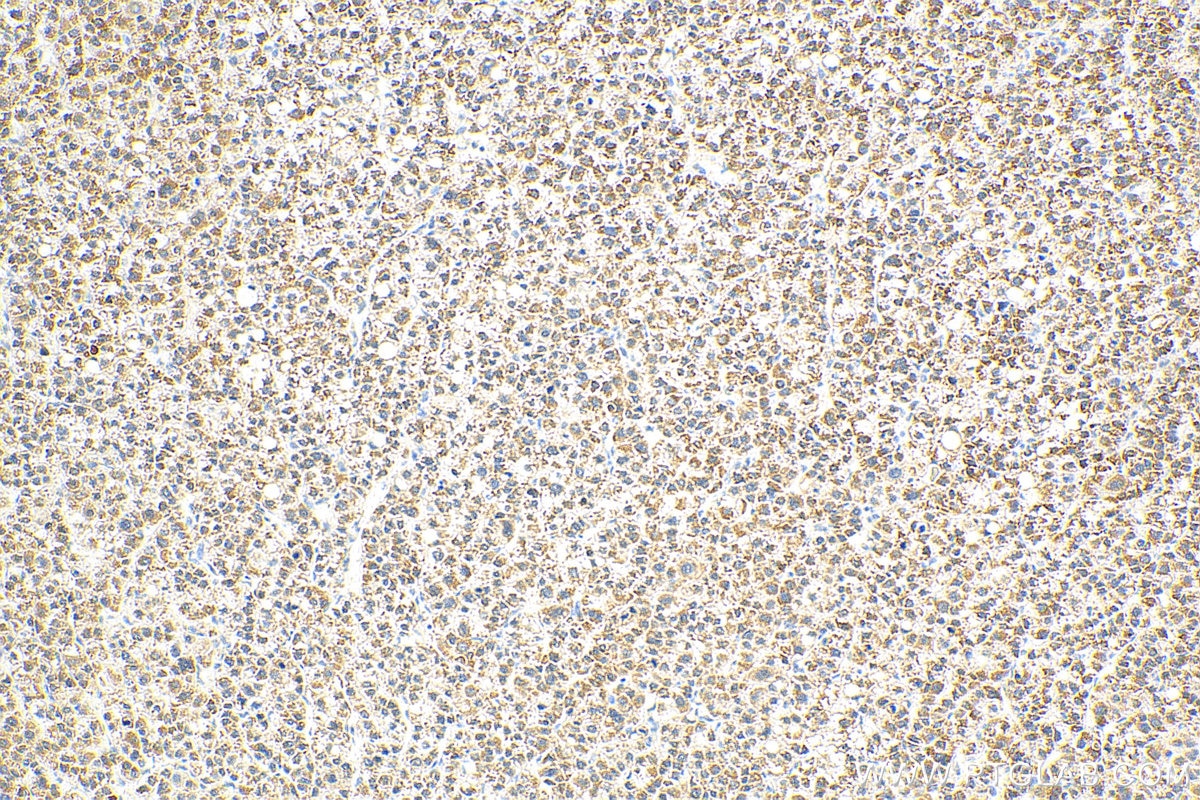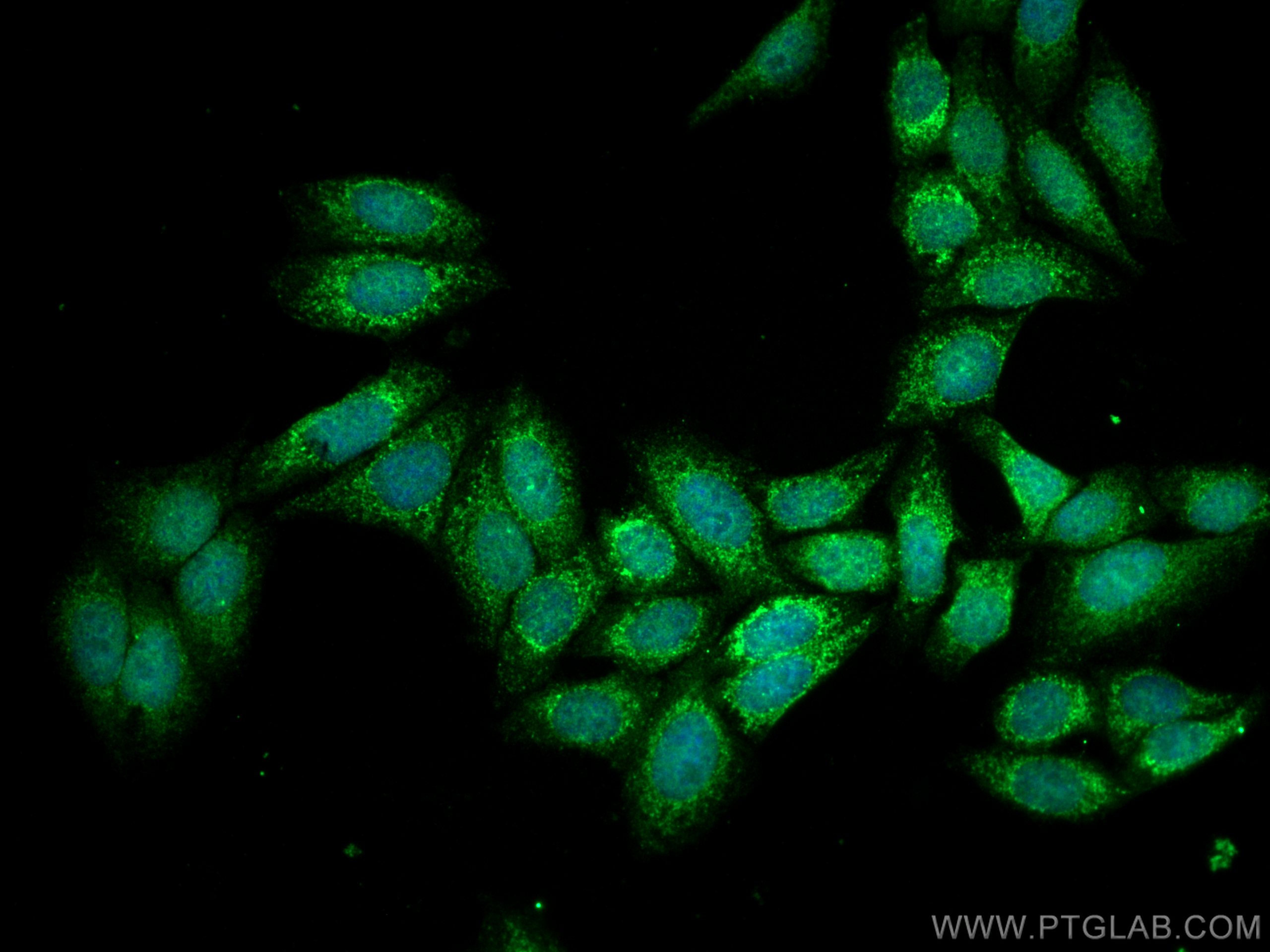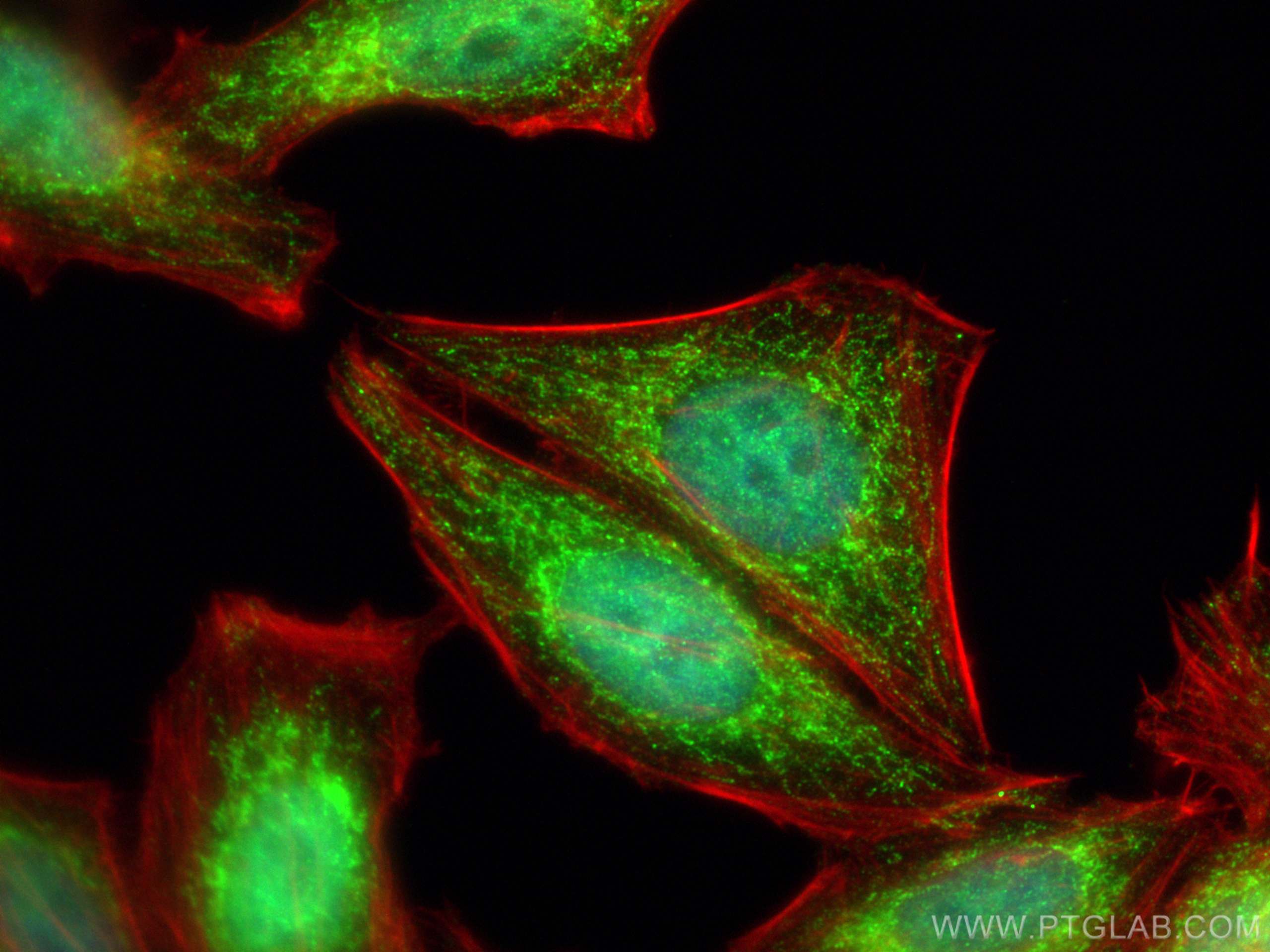- Phare
- Validé par KD/KO
Anticorps Polyclonal de lapin anti-CPS1
CPS1 Polyclonal Antibody for WB, IF, IHC, ELISA
Hôte / Isotype
Lapin / IgG
Réactivité testée
Humain, rat, souris
Applications
WB, IHC, IF/ICC, ELISA
Conjugaison
Non conjugué
N° de cat : 18703-1-AP
Synonymes
Galerie de données de validation
Applications testées
| Résultats positifs en WB | tissu hépatique de souris, cellules HeLa, tissu hépatique de rat |
| Résultats positifs en IHC | tissu de cancer du foie humain, il est suggéré de démasquer l'antigène avec un tampon de TE buffer pH 9.0; (*) À défaut, 'le démasquage de l'antigène peut être 'effectué avec un tampon citrate pH 6,0. |
| Résultats positifs en IF/ICC | cellules HepG2, |
Dilution recommandée
| Application | Dilution |
|---|---|
| Western Blot (WB) | WB : 1:2000-1:14000 |
| Immunohistochimie (IHC) | IHC : 1:50-1:500 |
| Immunofluorescence (IF)/ICC | IF/ICC : 1:50-1:500 |
| It is recommended that this reagent should be titrated in each testing system to obtain optimal results. | |
| Sample-dependent, check data in validation data gallery | |
Applications publiées
| KD/KO | See 2 publications below |
| WB | See 14 publications below |
| IHC | See 1 publications below |
| IF | See 2 publications below |
Informations sur le produit
18703-1-AP cible CPS1 dans les applications de WB, IHC, IF/ICC, ELISA et montre une réactivité avec des échantillons Humain, rat, souris
| Réactivité | Humain, rat, souris |
| Réactivité citée | Humain, souris |
| Hôte / Isotype | Lapin / IgG |
| Clonalité | Polyclonal |
| Type | Anticorps |
| Immunogène | Peptide |
| Nom complet | carbamoyl-phosphate synthetase 1, mitochondrial |
| Masse moléculaire calculée | 165 kDa |
| Poids moléculaire observé | 140-165 kDa |
| Numéro d’acquisition GenBank | BC140943 |
| Symbole du gène | CPS1 |
| Identification du gène (NCBI) | 1373 |
| Conjugaison | Non conjugué |
| Forme | Liquide |
| Méthode de purification | Purification par affinité contre l'antigène |
| Tampon de stockage | PBS avec azoture de sodium à 0,02 % et glycérol à 50 % pH 7,3 |
| Conditions de stockage | Stocker à -20°C. Stable pendant un an après l'expédition. L'aliquotage n'est pas nécessaire pour le stockage à -20oC Les 20ul contiennent 0,1% de BSA. |
Informations générales
CPS1 is an enzyme that catalyzes the first committed step of the hepatic urea cycle, which is important in the removal of excess urea from cells. Expressed primarily in the liver and small intestine, CPS1 can be used as a marker for mitochondria in these tissues. In addition, CPS1 expression appears to be lost in adenocarcinomas of the small intestine. The antibody can recognize two isoforms of this gene around 165 kDa and 116 kDa.
Protocole
| Product Specific Protocols | |
|---|---|
| WB protocol for CPS1 antibody 18703-1-AP | Download protocol |
| IHC protocol for CPS1 antibody 18703-1-AP | Download protocol |
| IF protocol for CPS1 antibody 18703-1-AP | Download protocol |
| Standard Protocols | |
|---|---|
| Click here to view our Standard Protocols |
Publications
| Species | Application | Title |
|---|---|---|
Cancer Cell Inhibition of De Novo NAD(+) Synthesis by Oncogenic URI Causes Liver Tumorigenesis through DNA Damage. | ||
Nat Commun Plasmodium sporozoite phospholipid scramblase interacts with mammalian carbamoyl-phosphate synthetase 1 to infect hepatocytes. | ||
Mol Metab SWI/SNF complex subunit BAF60a represses hepatic ureagenesis through a crosstalk between YB-1 and PGC-1α. | ||
iScience Mof plays distinct roles in hepatic lipid metabolism under healthy or non-alcoholic fatty liver conditions | ||
J Cell Mol Med Caspase recruitment domain family member 10 regulates carbamoyl phosphate synthase 1 and promotes cancer growth in bladder cancer cells.
| ||
Front Cell Dev Biol Urea as a By-Product of Ammonia Metabolism Can Be a Potential Serum Biomarker of Hepatocellular Carcinoma.
|
